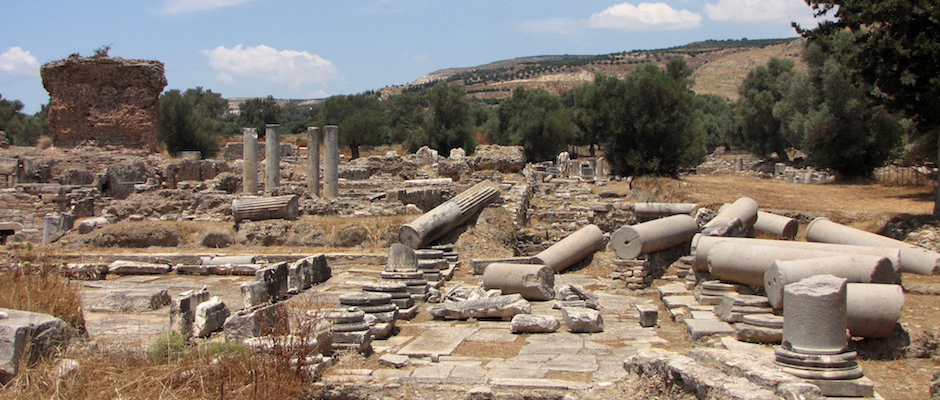This research concerns a group of inscriptions from Gortyna Praetorium, the seat of government activity which has been reshaped several times, remaining in use at least until the 7th century A.D., probably with the function of administrative centre.

The inscriptions are part of a cycle of celebratory monuments erected during the reconstruction carried out under the reign of Gratian. The cycle, absolutely unique in its kind, is characterised by some peculiarities that make difficult to find a satisfactory explanation for its various aspects and a sole interpretation of its historic, epigraphic and archaeological context. The texts were found inside or nearby the building and date back to one of the best-known building phases, namely the reconstruction ordered by Oecumenius Dositheus Asclepiodotus, Governor of Crete, during the last period of Gratian’s reign. The renovation of the building (or at least of the basilica) was accompanied by a cycle of celebratory monuments, including an unknown number of statues (at least ten) erected nearby or inside the new Praetorium in honour of some of the highest-rank members of the Roman Senate.
All of the inscriptions are dedicated to people who do not appear to have carried out tasks or covered positions in Crete, with the exception of two of them. The texts are in prose, share identical formulas and seem to have been engraved by the same hand on re-used supports, without specifying the reason for the honour attributed to their addressees. These singularities constitute a unicum which still poses considerable chronological, prosopographical and institutional issues calling for a substantial review of the whole dossier, involving both a new reading of the documents themselves and a reconsideration of the various interpretations proposed so far, none of which answers all of the questions raised.
Scientific supervisor: Ignazio Tantillo


